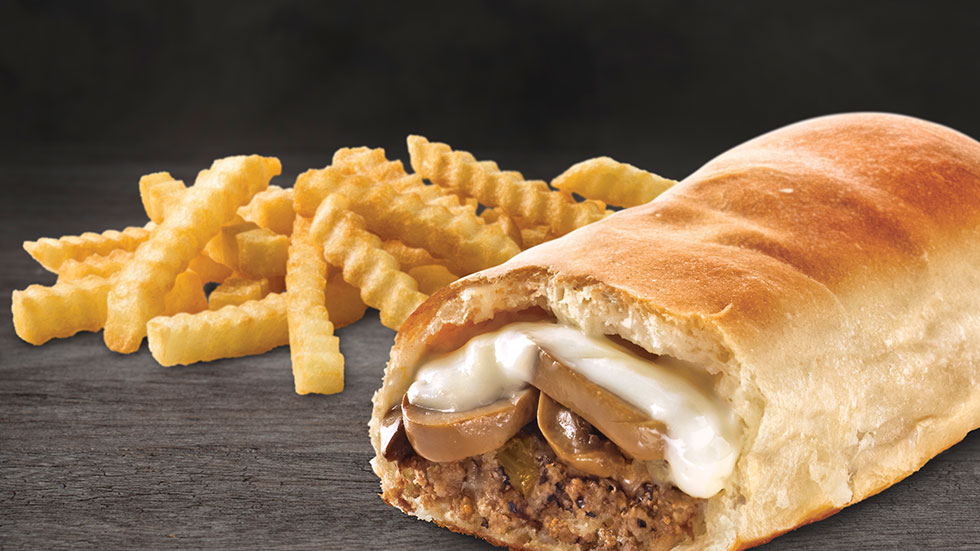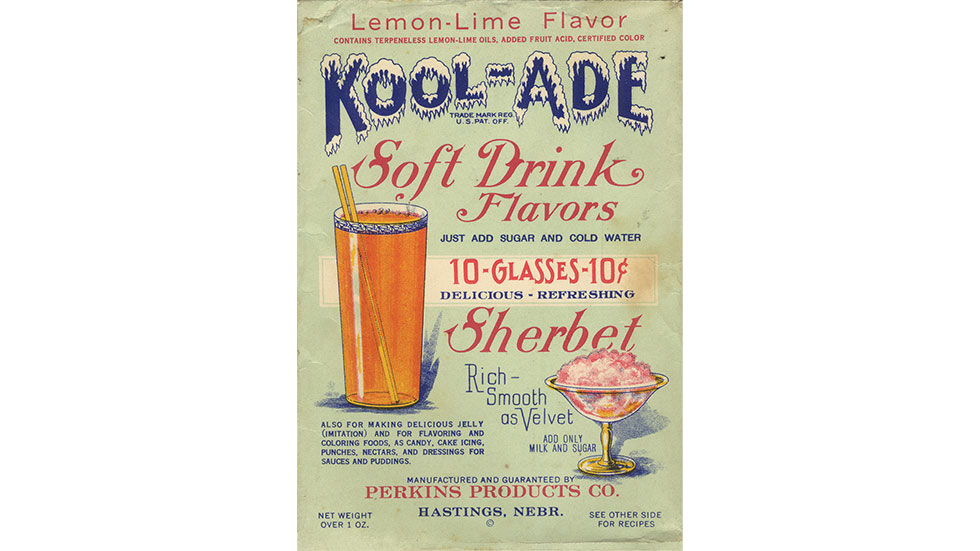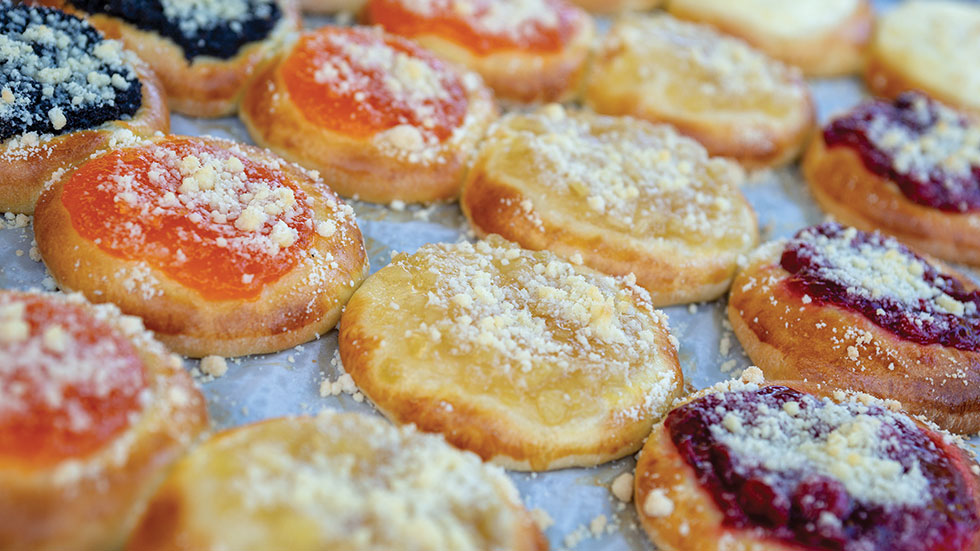Iconic Foods from Nebraska
What do Reuben sandwiches and Jell-O have in common? Both were invented in Nebraska

Nebraska may not be a haven of Michelin-starred restaurants, but the Cornhusker State dishes up beloved classics that have become widespread favorites. From Midwestern staples to national sensations, here’s what to enjoy on your way to the Sandhill dunes.
 Swiss Mushroom Runza Sandwich. Photo courtesy of Runza Restaurants
Swiss Mushroom Runza Sandwich. Photo courtesy of Runza Restaurants
THE RUNZA SANDWICH
In the tough post-World War II job market, Nebraskan Sarah “Sally” Everett, together with her brother and brother-in-law, set up a carhop stand—a 1949 version of today’s food truck—near Pioneers Park in Lincoln, Nebraska’s capital. She served what she knew how to cook: hot dogs, knockwurst, hamburgers and fries as well as dough stuffed with cooked beef, cabbage and onions and baked in the oven, which she trademarked as a Runza sandwich in 1950.
Everett’s ancestors were Russian and Germans from Russia who had once lived in the Volga River region where stuffed pastries, known as pierogis, were lunch staples. Why Sally called her stuffed pastries Runza sandwiches remains a mystery, but she was certainly a rare female entrepreneur for her time.
In the 1980s, her son developed the family business into the Runza Restaurant chain, which now has more than 80 locations in the state, plus some in Colorado, Iowa and Kansas. Today’s Runza sandwiches come in varied flavors, including barbecue bacon and Swiss cheese and mushrooms, and they remain Nebraskans’ favorite lunch grab.
 Reuben Sandwich. Photo courtesy of Rebecca/Stock.Adobe.com
Reuben Sandwich. Photo courtesy of Rebecca/Stock.Adobe.com
THE REUBEN
The Reuben was conceived in the early 1900s at Omaha’s Blackstone Hotel—now the Kimpton Cottonwood Hotel—when the owner’s son made the sandwich as requested by Reuben Kulakofsky, a local grocer who was engaged in a poker game at the hotel one night. The recipe began as pastrami, cheese and sauerkraut on rye with Russian dressing and evolved into corned beef and Thousand Island dressing.
Today, you can get a taste of the closest-to-the-original sandwich—or dare we say even better!—at the hotel’s Orléans Room. The secret to the perfect Reuben is slow-roasted, never-frozen meat and bread slathered with butter before it’s toasted. The result is the juicy, mouthwatering modern Reuben, which is delicious any day but perhaps best enjoyed on March 14, National Reuben Sandwich Day.
 Hastings big. Photo courtesy of The Hastings Museum
Hastings big. Photo courtesy of The Hastings Museum
KOOL-AID
In the early 1920s, young Edwin Perkins was working in his father’s grocery store in Hastings when a lovely local woman walked in. She brought a package of powdered Jell-O and asked if the shop could begin to carry it. Fascinated by how the powder, mixed with water, formed the treat, Perkins envisioned making drinks the same way because the glass bottles in which beverages were shipped often cracked, leaked or broke.
Starting with liquid juice concentrates, Perkins created Fruit Smack in the early 1920s and then worked with a chemist to forge a powdered version, eventually naming it Kool-Ade (now spelled Kool-Aid). Perkins’ artsy posters and novel marketing incentives made the colorful beverages national libations, still loved a century later. His original flavors included cherry, strawberry, grape, orange and lemon-lime, but there are more varieties today, including pineapple, blue raspberry and green apple.
“We’re getting close to 30 flavors [of Kool-Aid], but some are only available in other countries,” says Teresa Kreutzer-Hodson, director of the Hastings Museum, where Perkins’ success story is depicted through a permanent display of vintage advertising posters.
Oh, and the lovely lady who brought Edwin the Jell-O? Her name was Kitty Shoemaker, and she later became his wife. How’s that for a fairy-tale ending? It’s reason enough to raise a glass of Kool-Aid.
 Fresh Baked Kolaches. Photo courtesy of Bob/Stock.Adobe.com
Fresh Baked Kolaches. Photo courtesy of Bob/Stock.Adobe.com
KOLACHES
Yum, Czech koláče, or kolaches: the irresistibly soft, fluffy pastries filled with fruit, berries or cheese, and even poppy seeds that melt in your mouth.
“The recipes came to America in the minds of young women who immigrated to the US in the 1860s,” says Sheryl Kastanek, former secretary of the Nebraska Czechs of Wilber, a town officially named the Czech capital of America by President Ronald Reagan.
Naturally, Wilber is the place to try koláče, especially during the town’s Czech Days, held annually the first weekend of August. Festival-goers don colorful vintage clothes, women braid their hair with bright ribbons, and everyone dances to traditional tunes in celebration of their beloved treat.
Can’t be there in August? Savor some at any time of year at the historic Hotel Wilber or Frank’s Smokehouse, recommends Kastanek. “Some consider kolaches a dessert, but we eat them for breakfast, afternoon snacks and as a bedtime nosh,” she adds.
 Rocky Mountain oysters. Photo courtesy of Redthread Lincoln, NE
Rocky Mountain oysters. Photo courtesy of Redthread Lincoln, NE
ROCKY MOUNTAIN OYSTERS
So-called Rocky Mountain oysters aren’t oysters at all. In fact, they couldn’t be further away from seafood than Nebraska is from the sea. Although crunchy on the outside like deep-fried bivalves, these meaty morsels are actually bull testicles. Pescatarians, beware: They might also appear on area menus as prairie oysters or cowboy caviar, owing their existence to thrifty cattle ranchers who didn’t like wasting any edible animal parts.
One place to try them is Ashland-based Round the Bend Steakhouse, whose owner, T.J. Olson, likens them to chicken strips—kind of. “It’s definitely a specialty food,” he says.
Personal preferences aside, one common denominator in these Cornhusker culinary concoctions stands out: making do with what life gives you—and loving the taste!
